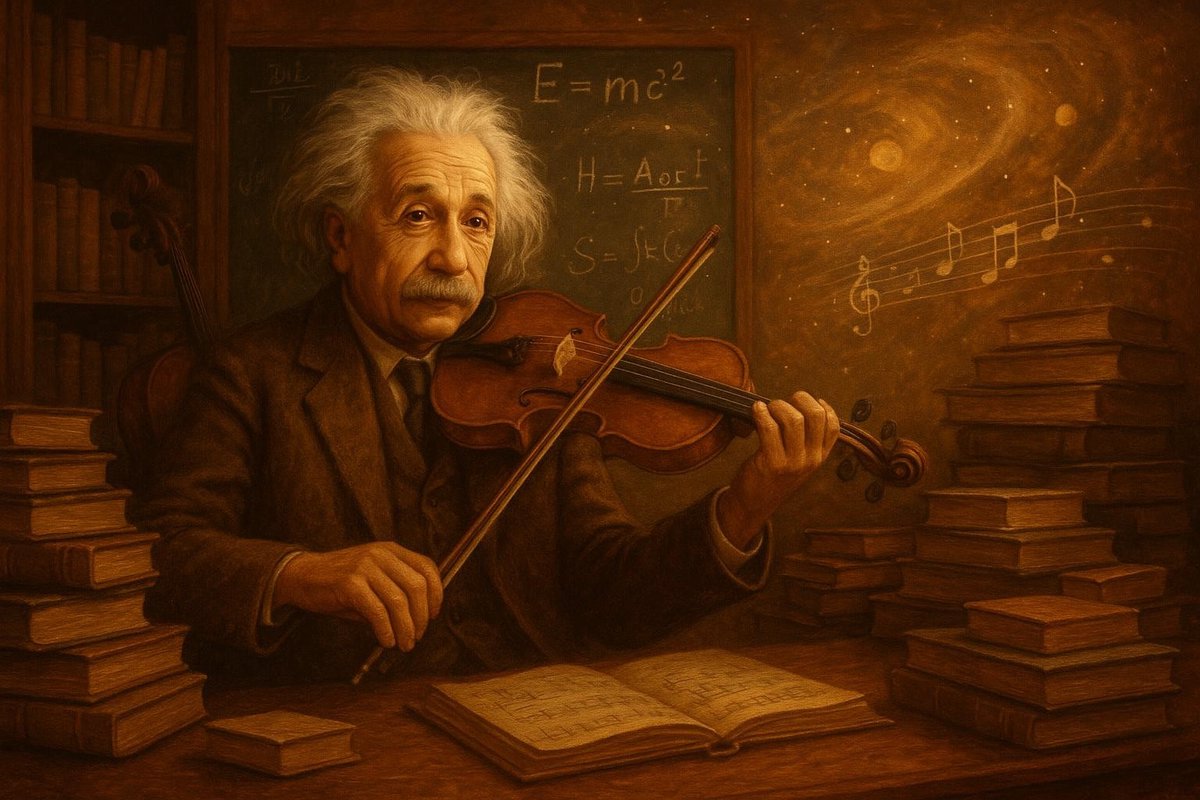
Albert Einstein was not just a scientist; he was a visionary who orchestrated ideas like notes in a symphony. His theory of relativity wasn’t just a scientific breakthrough; it was a testament to the power of imagination transcending the rigid walls of classical physics. Interestingly, Einstein’s genius was as much about artistic insight as it was about mathematical rigor, painting space-time as a vast, harmonious composition.
Early Influences: A Mind Touched by Music and Philosophy
What shapes the mind of a genius? For Einstein, it was a tapestry woven from music, philosophy, and curiosity. Born in 1879 in Ulm, Germany, Einstein’s early life was imbued with the musical rhythms of his mother Pauline’s piano playing. His exposure to music did more than soothe his soul; it taught him to think in patterns and harmonies.
- The young Einstein was captivated by a compass his father gave him, sparking a quest for understanding the invisible forces of nature.
- Engaging with philosophical texts, particularly Kant, Einstein began to question how we perceive reality itself.
- These early experiences fostered a cognitive playground where science and art met, laying the groundwork for his future theories.
Of course, it wasn’t just about academic pursuits. Many people believe that the way Einstein played the violin influenced his scientific thinking, allowing him to visualize the universe’s complexities as melodies yet to be composed.
Mental Models: Crafting the Symphony of Space-Time
Einstein’s mental models were like brushstrokes on the vast canvas of the cosmos. Before Einstein, physics was dominated by Newtonian mechanics, where time and space were absolute entities. But Einstein dared to ask, “What if they weren’t?”
- His thought experiments, such as chasing a beam of light, were both playful and revolutionary, challenging the established notions of time and space.
- By reimagining how observers see each other’s clocks and measuring devices, he unified time and space into a single continuum: space-time.
- He drew analogies between the bending of space-time and the curvature of musical notes, creating a new symphonic understanding of the universe.
Interestingly, Einstein’s theories were not just equations; they were narratives where light played the lead role, weaving through the fabric of space-time with elegance and precision.
Challenges & Resilience: Overcoming the Classical Cacophony
Einstein faced a world steeped in classical physics—a world not easily swayed by radical ideas. Critics initially dismissed his theories as abstract musings. Yet, resilience was his conductor, guiding him through the discord.
- The scientific community of the early 1900s was skeptical of relativity, clinging to the comforting certainty of Newton’s laws.
- Einstein’s perseverance in the face of criticism was not just about science; it was about a profound belief in the symphonic nature of truth.
- His 1919 vindication, when Eddington’s eclipse expedition confirmed his predictions about light bending, was the crescendo that silenced the doubters.
As time goes on, it becomes clear that Einstein’s resilience was as much a part of his genius as his ideas, proving that true innovation often requires standing firm against the chorus of skepticism.
Legacy: The Endless Echo of Cosmic Music
Einstein’s legacy is a testament to the enduring power of imagination. His vision of space-time as a cosmic symphony continues to resonate, influencing fields far beyond physics.
- His ideas have permeated popular culture, inspiring everything from science fiction to philosophical debates on the nature of reality.
- The concept of space-time laid the groundwork for technologies like GPS, which rely on the precise calculations of relativistic physics.
- Einstein’s interdisciplinary approach encourages a generation of thinkers to see beyond boundaries, fusing art, music, and science.
Of course, Einstein’s work serves as a reminder that the universe is an unfinished symphony, inviting new interpretations and compositions from those willing to listen to its hidden melodies.
In conclusion, Einstein was more than a physicist; he was a maestro of ideas. His ability to weave together strands of thought from diverse fields to redefine our understanding of the universe is a timeless lesson in creativity and courage. Today, his symphony continues to play on, inspiring those who dare to dream beyond the visible spectrum.
Fuel Someone Else’s Curiosity
Did Einstein’s cosmic symphony inspire you? Share this article with a friend or colleague who might see the universe a little differently now. After all, curiosity is the spark that ignites new ideas, and by sharing, you’re helping to compose the next great symphony of understanding.

Leave a Reply